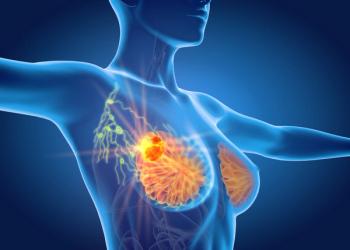
Pomalidomide Combo Shows Deep, Enduring Responses in R/R Multiple Myeloma
Data from the phase 1b MonumenTAL-2 trial support pomalidomide plus talquetamab as a promising treatment option in relapsed/refractory multiple myeloma, says Jeffrey Matous, MD.
Talquetamab-tgvs (Talvey) plus pomalidomide (Pomalyst) may be the “best” pomalidomide-based combination for treating patients with relapsed/refractory multiple myeloma based on a high rate of durable responses in a small cohort of patients in the phase 1b MonumenTAL-2 trial, Jeffrey Matous, MD said.
In an interview with CancerNetwork® during the
The overall response rate (ORR) was 93.8% (n = 15/16) when pomalidomide was administered at 0.4 mg/kg every week and 84.2% (n = 16/19) when the drug was given at a dose of 0.8 mg/kg every 2 weeks in combination with talquetamab. Additionally, it was reported that the median duration of response (DOR) was not reached (NR; 95% CI, 12.0-NR) in the 0.4 mg/kg weekly cohort and the 0.8 mg/kg every 2 weeks cohort (95% CI, 7.4-NR). The 9-month DOR rates were 100.0% (95% CI, 100.0%-100.0%) and 83.9% (95% CI, 49.4%-95.7%) in each respective cohort.
Transcript:
In this group of patients who had a medium of 3 prior therapies, the overall response rate was [approximately] 90%. Many of those responses were very deep; they were complete responses.The responses occurred quickly at a median of just between 1 and 2 months, and most of them were very durable. There was a subset of patients who had either high-risk disease or even extramedullary disease, and we saw responses in those patients as well. [There was a] very encouraging therapeutic response with this combination—one that I personally think is probably the best pair we’ve seen with pomalidomide yet in terms of treating relapsed/refractory multiple myeloma.
If you look at combinations with pomalidomide and other agents in the relapsed/refractory myeloma setting, this is by far the most potent one that we’ve seen. This [combination] has great promise. I can just speak to the patients at our institution who have participated in this research trial, most of whom have ongoing stringent complete responses over a year into therapy. It’s very encouraging.
Reference
Matous J, Biran N, Perrot A, et al. Talquetamab + pomalidomide in patients with relapsed/refractory multiple myeloma: safety and preliminary efficacy results from the phase 1b MonumenTAL-2 study. Blood. 2023;142(suppl 1):1014. doi:10.1182/blood-2023-187706
Newsletter
Stay up to date on recent advances in the multidisciplinary approach to cancer.
















































































